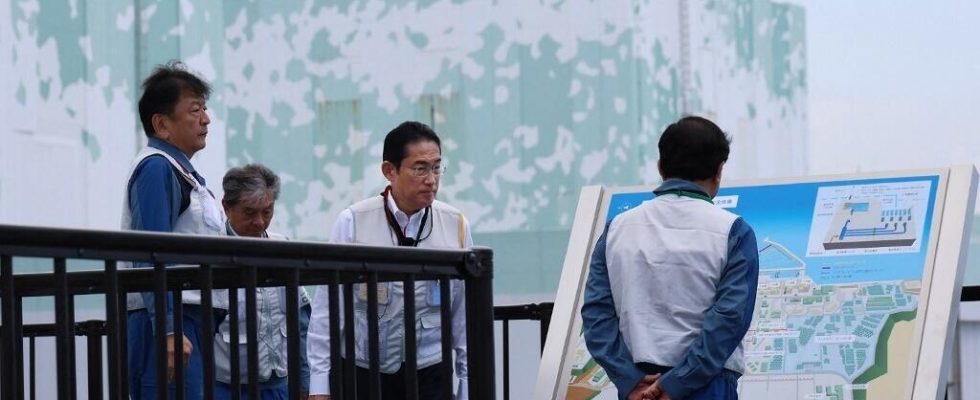Returning from the Camp Davis trilateral summit with the American president and the South Korean president, Japanese Prime Minister Fumio Kishida visited the damaged Fukushima power plant on Sunday August 20, 2023. The time to inspect its facilities before the discharge of treated water into the Pacific Ocean, which should begin before the end of the summer.
2 mins
With our correspondent in Tokyo, Frederic Charles
Japanese Prime Minister Fumio Kishida said on Sunday that his government had not yet decided when the treated water from the Fukushima nuclear power plant will be discharged into the Pacific. According to local media, the discharge of this water from rain, groundwater or injections necessary to cool the cores of nuclear reactors that have melted down, should begin at the end of August.
By his presence in Fukushima, the Prime Minister, Fumio Kishida, wants to appease, one last time, the fishermen of the region before the beginning of the discharge of treated water from the power station into the ocean one kilometer from the coast via an underwater conduit. sailor built for this purpose.
Storage capacities have reached their limits
Storage capacities have reached their extreme limit. The water used to cool the reactors is cleaned of all its radionuclides except tritium. And there is very little tritium in this stored water, just 16 g in a volume equivalent to 500 Olympic swimming pools.
The International Atomic Energy Agency (IAEA) has already approved the discharge into the sea must take between 30 and 40 years, the time to dismantle the plant. Dozens of other power stations around the world release tritium-laden water every week without the slightest health problem.
Twelve years after the Fukushima accident, Prime Minister Fumio Kishida has made the revival of nuclear power a priority to achieve carbon neutrality. The majority of the Japanese are now in favor of it. As for the discharge of water from the plant, it causes more reviews in China and in South Korea than in Japan.
Read alsoContaminated waters of Fukushima: “Discharges will be similar to those that existed before the accident”
